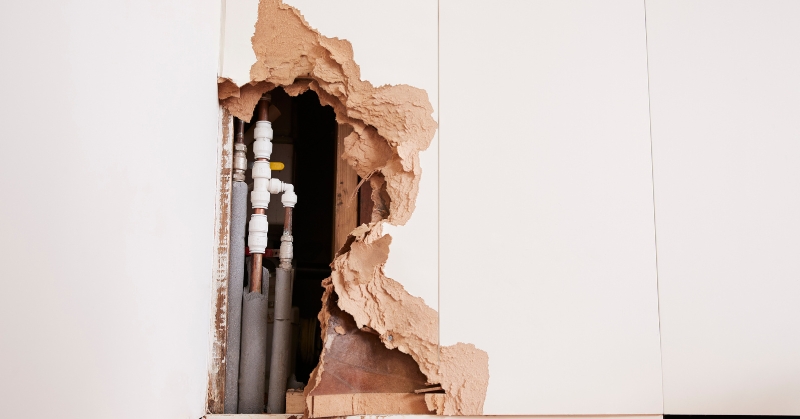If you’ve ever walked into your Kansas City home to find a flooded basement or a soggy kitchen, you know the gut-punch feeling of water damage. Whether it’s a burst pipe in Brookside or a storm-soaked living room in Lee’s Summit, the mess is bad enough without the added stress of figuring out insurance. I’ve been there—staring at a wet carpet, wondering if my policy would cover the chaos or leave me high and dry. The good news? Navigating insurance claims for water damage doesn’t have to be a nightmare. With the right steps, you can get the payout you deserve and get your home back to normal. Here’s everything you need to know about tackling insurance claims in Kansas City, from start to finish.
Understanding Your Policy: The Starting Line

Before you even think about filing a claim, grab your insurance policy—or at least the summary page. Water damage coverage can be tricky, and not all policies are created equal. Most standard homeowner policies in Kansas City cover “sudden and accidental” water damage, like a broken pipe or an appliance leak. But things like gradual leaks (that dripping faucet you ignored for months) or flood damage from a nearby creek might not be covered unless you’ve got extra endorsements, like flood insurance through FEMA’s National Flood Insurance Program.
Kansas City’s weather—think spring downpours or flash floods around the Missouri River—makes it critical to know your policy’s fine print. Check for terms like “water backup” coverage (for sump pump failures) or “mold remediation” limits, since mold is a common headache after water damage. If you’re unsure, call your agent. It’s better to ask dumb questions now than to get a denial letter later.
Step 1: Act Fast, But Don’t Touch Too Much
When water hits, time is your enemy. Mold can start growing in 24-48 hours, especially in KC’s humid summers, and insurance companies expect you to “mitigate” damage—fancy talk for stopping it from getting worse. But here’s the catch: you need to preserve the scene for the adjuster.
So, what do you do? Shut off the water source if it’s safe—say, a valve under the sink—or call a plumber for bigger issues. Move valuables like furniture or electronics to a dry spot, but don’t start ripping out drywall or tossing soggy rugs just yet. Take tons of photos and videos—every wet corner, every damaged item. I learned this the hard way when a leaky fridge ruined my Northland kitchen floor. No pics, no proof, and my claim took forever. Documentation is your golden ticket.
Step 2: Call Your Insurance Company (And Pros)
Once you’ve got the situation under control, report the claim ASAP. Most insurers have 24/7 hotlines, so don’t wait for Monday. Be ready to share your policy number, a description of the damage, and those photos you took. They’ll assign an adjuster to visit your home, but don’t sit idle while you wait—water doesn’t pause for bureaucracy.
This is where professional restoration companies come in.
They swooped into a friend’s Waldo home after a pipe burst, handled the drying, and dealt with the adjuster like it was their day job. Pros like these start mitigation—pumping out water, setting up fans, checking for hidden moisture—so you don’t end up with a bigger bill or a denied claim for “neglect.”
Step 3: Work the Claim Like a Pro
When the adjuster shows up, they’re not your enemy, but they’re not your BFF either. Their job is to assess the damage and figure out what’s covered, so make their job easy. Walk them through the damage, show your photos, and point out anything they might miss, like water stains creeping up the drywall. Be honest—don’t exaggerate, but don’t downplay the problem either.
Here’s a Kansas City tip: if your home’s older, like those charming bungalows in Hyde Park, mention any upgrades (new cabinets, hardwood floors) that might affect the claim’s value. Keep a log of every call, email, and visit with your insurer, including names and dates. I once forgot who I talked to about a claim, and it was like starting from scratch—ugh.
Your restoration team can be a secret weapon here. The good ones, like Fine Restoration, know how to document damage in a way that checks every box for insurance, from moisture readings to repair estimates. They’ll often deal directly with the adjuster, saving you from playing middleman.
Step 4: Know What’s Covered (And What’s Not)
Coverage depends on the cause of the water damage. A sudden pipe burst in your Plaza condo? Probably covered. A sewer backup in your Blue Springs basement? That might need separate “water backup” coverage. Flooding from a nearby stream, like those rainy days near Brush Creek? You’ll need flood insurance, which most KC homeowners don’t have unless they’re in a flood zone.
Mold is another gray area. Some policies cap mold remediation at $5,000 or $10,000, which can vanish fast if water sat too long. If your claim gets denied or lowballed, don’t give up. Ask for a written explanation and consider appealing—sometimes a second look flips the decision. Worst case, a public adjuster (for a fee) can fight for you, but try working with your restoration team first.
Step 5: Stay on Top of Repairs and Payouts
Once your claim’s approved, the insurer might pay you directly or cut a check to your restoration company. Either way, keep tabs on the funds and the work. Make sure repairs match what was promised—same quality materials, same scope. I heard about a guy in Parkville who got stuck with cheap laminate instead of his original oak floors because he didn’t double-check.
After repairs, do a final walkthrough with your restoration team. Check for lingering issues like musty smells or soft spots in the floor—red flags for missed moisture. In Kansas City’s clay-heavy soil, basements can stay damp if not dried properly, so don’t skip this step.
Why Pros Make All the Difference
Dealing with insurance is stressful enough without worrying about water damage spreading while you haggle. That’s why I always say: hire pros who know both restoration and insurance. Kansas City’s lucky to have solid options like ServiceMaster DSI and Power Dry, but if you want a team that feels like a neighbor looking out for you, I can’t say enough good things about Fine Restoration’s insurance-savvy water damage crew. They’ll handle the drying, the paperwork, and the adjuster drama, so you can focus on getting your life back.
Got a water damage claim story—good, bad, or ugly? Share it below. We Kansas Citians stick together, and I’d love to hear how you navigated the mess!



